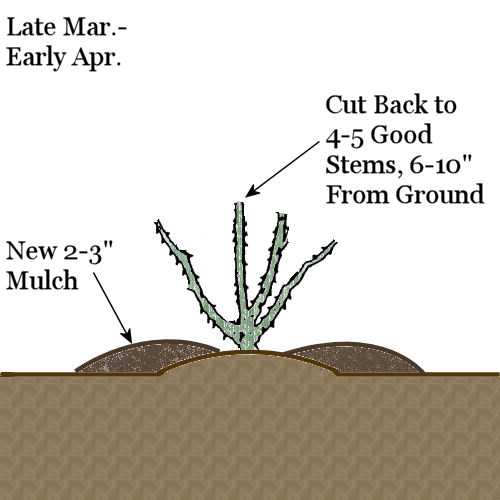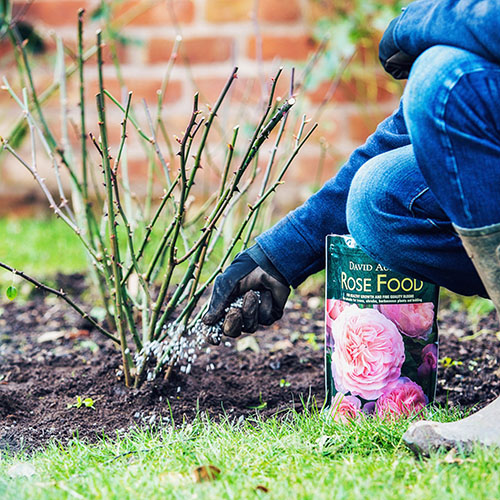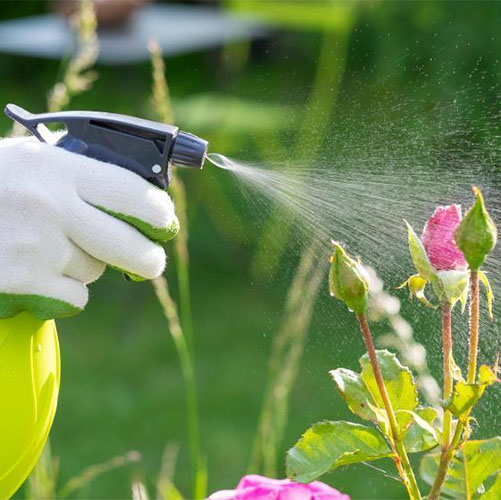Hybrid Rose Care to-do Calendar

Late March - Early April
Prune out all dead wood, then thin out the branches leaving four or five of the strongest remaining. Prune all the branches back to eight to ten inches in length. Remove previous years mulch. The previous years mulch is a great overwintering area for Blackspot fungus spores. Apply a clean new 2-3" of mulch, leaving the stem exposed.

Early April - Late August
Get your roses started with a good granular fertilizer, such as a rose food, then keep the plants well fertilized on a bi-weekly or monthly schedule depending on the manufacturer recommendations. If you don't know what kind of fertilizer to use, stop in to our garden center. We carry several very effective fertilizers, both organic and manufactured.

Late April - October
Start a regular spraying program every ten to fourteen days using a fungicide for prevention of Blackspot and Powdery Mildew. Neither disease is fatal, but they do weaken the plant and cause defoliation. You can spray this in combination with a systemic insecticide for control of insects If you do not want to mix these products by yourself, then there are a few effective premixed sprays that combine a fungicide with a systemic insecticide that is also available. These can be purchase from our garden centers.

June - October
After the point that you think your roses have bloomed completely, prune the expended rose back to a spot just above the first set of five leaves. There you will find a bud from which new growth, and new buds will appear. Cut just above that bud to start new blooms. Make your cuts on a 45 degree angle to get the best results.

September 1st
Stop all fertilizing. This helps the plant to harden off naturally before the hard freezes of winter begin. But, be sure that you continue to water your roses until November.

Late November
Roses must have protection to get through most Northern Indiana winters. To protect your plant, mound up soil six to eight inches over the rose graft, that is where all the branches radiate from. Over the topsoil mound either mulch, sawdust, grass clippings or some other lightweight material to help insulate but not suffocate the plant. Don't prune the branches back at all if possible. Some light pruning may be done if the bush is too tall. To prevent wind or snow damage try tying all of the branches together.
